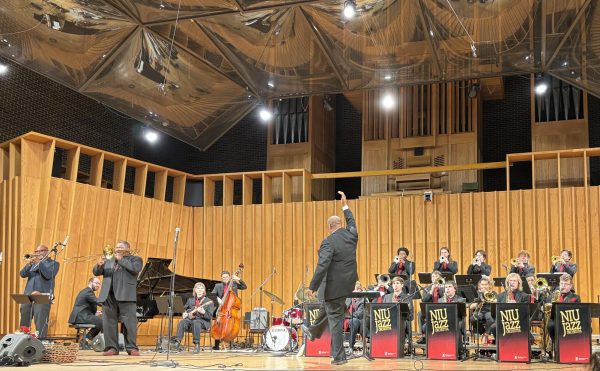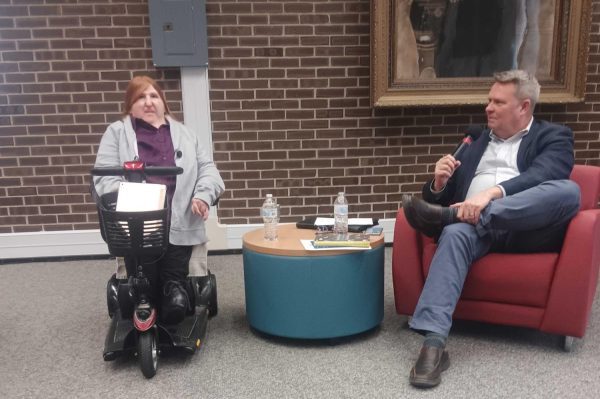NIU Philharmonic strikes the right tune
September 26, 2007
The NIU Philharmonic’s concert tonight will showcase an ensemble in a time of transition. With a new conductor, new string faculty, and routine annual lineup changes, the NIU Philharmonic is still breaking in its new clothes, so to speak.
The ensemble begins its 2007-2008 concert season tonight in the Music Building’s Boutell Memorial Concert Hall.
Tonight’s concert, the first of five that the Philharmonic will present this concert season, will feature a program of European orchestral music by Mozart, Fauré and Sibelius.
The Philharmonic’s conductor’s platform seemed to have a revolving door in recent times, with three conductors in the last four years. The most recent conductor, Brett Mitchell, left NIU for a position at the Houston Symphony. He notified the NIU community of his planned departure in late spring, affording school of music director Paul Bauer little time to find a replacement.
Some of Bauer’s colleagues recommended Timothy Semanik, a doctoral student in orchestral conducting at Northwestern. After sending in his resumé and participating in a consultation with other music faculty, Semanik was hired as interim conductor.
Originally a trumpet player, Semanik received his calling to the conductor’s platform during his junior year at California State University Fullerton.
“I wanted to deal with pieces on a whole…so I thought I would get into conducting,” Semanik said. He was soon conducting selections on the university’s choral concerts and knew that he wouldn’t be trading in his baton for a trumpet any time soon.
Semanik further pursued conducting by earning a master’s degree in orchestral conducting at the University of Michigan and is now all-but-dissertation at Northwestern.
“I really had no idea what to expect,” Semanik said about the orchestra he would be leading. “The first day I stepped on campus was the first day of classes.”
Semanik designed tonight’s program to challenge different aspects of the Philharmonic’s abilities.
The concert will start with the overture to Don Giovanni, written in 1787 and considered by many to be Mozart’s greatest opera. Semanik wanted to give the string section an opportunity to wrest with the problems posed by the inimitable Mozart style, which can be deceptively simple, says junior violin performance major Jacob Hansen.
“It’s such a familiar style, it’s hard to approach it with fresh ears,” Hansen said.
While the Mozart piece demands crisp articulation and immaculate phrasing, French composer Gabriel Fauré’s Pelléas et Mélisande Suite for Orchestra challenges the Philharmonic’s sensitivity to tone color and blend. Semanik said the piece is less technically challenging, but forces the musicians to use their ears.
Fauré first wrote the piece as incidental music for a performance of Maurice Maeterlinck’s play of the same name, and later expanded it into the orchestral suite, which was first performed in 1901. The NIU audience will hear an expanded version, first performed in 1909.
“We’re rather short on violins in the orchestra,” Semanik said. “[The Sibelius] gives the brass section a chance to work.”
Written at about the same time as the Fauré, the two pieces sound little alike. Where the Fauré exhibits a light French lyricism, the Sibelius is insistently progressive and speaks loudly of the composer’s Finnish nationalism.
“It’s a more demanding, more challenging, more meaty piece,” Semanik said. The orchestra’s performance of the 40-minute work should serve as a barometer for how they are adapting to this year’s ubiquitous personnel changes.
“It’s been right down to business from the very beginning,” said senior percussion performance and music education major Ben Runkel about rehearsals with Semanik.
With new players, new faculty and a new conductor, the Philharmonic couldn’t afford to function any other way.










